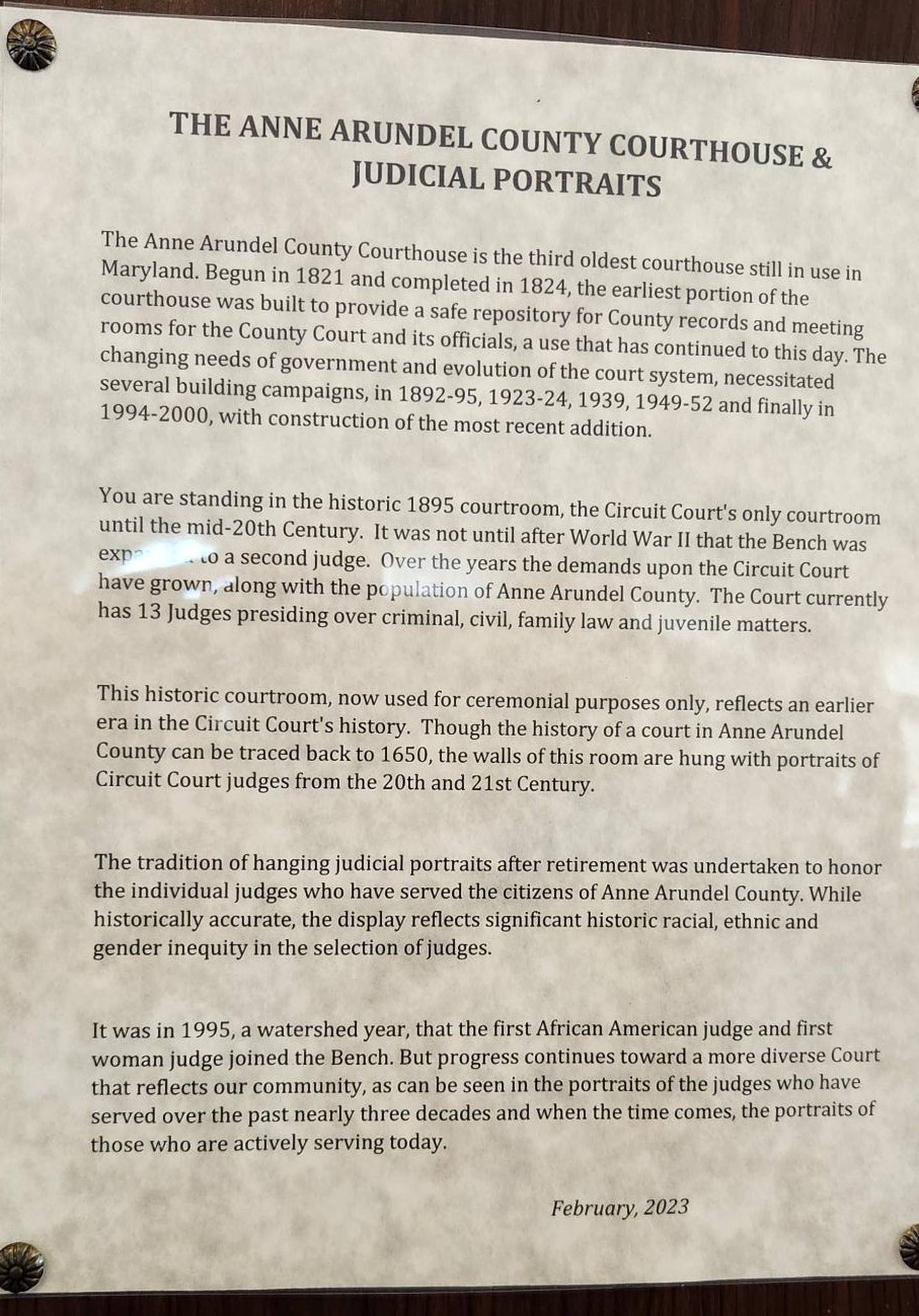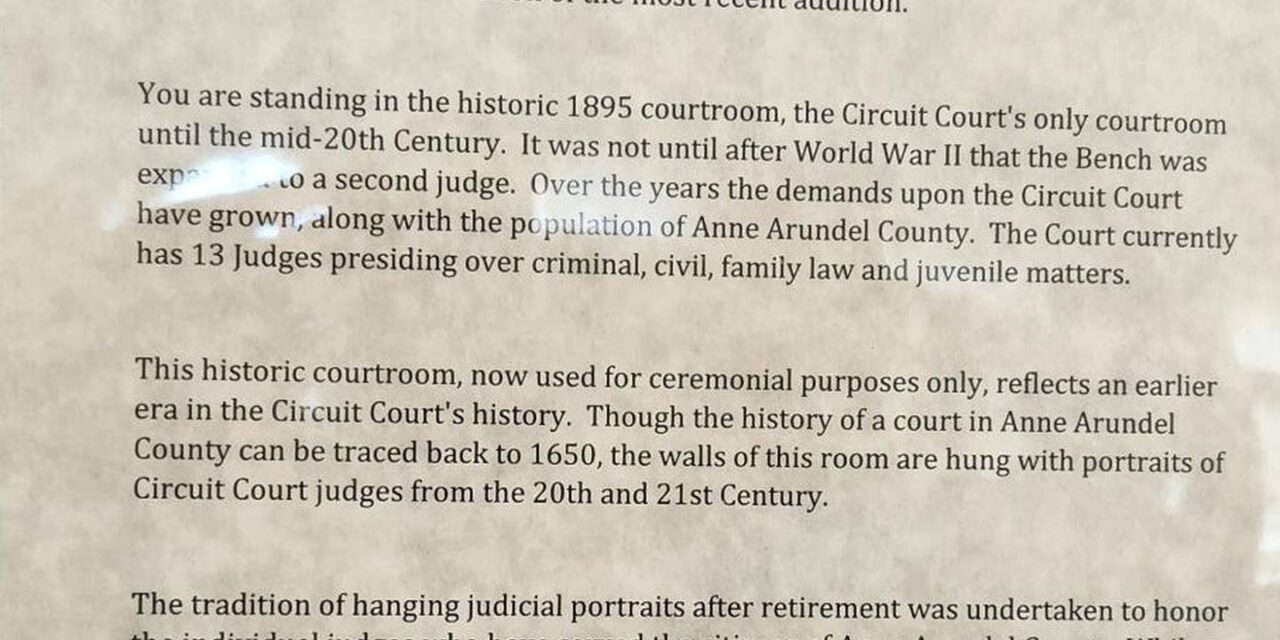During the swearing-in ceremony a year ago for Erica Griswold, Anne Arundel County’s first Black register of wills, Circuit Court Clerk Scott Poyer noticed something about the portraits in the ceremonial courtroom. The portraits, dating back to the early 19th century, were all of white men.
The county had a long tradition of hanging portraits in the courthouse, which was built in 1824 and is the third-oldest still in use in Maryland, to honor judges after they retired.
But it occurred to Poyer during Griswold’s swearing-in that, in his words, “we really need to get with the times.”
Then-County Administrative Judge Glenn Klavans agreed. With the court becoming more diverse, he said, the portraits didn’t reflect the diversity of the bench and could give a disheartening impression to the public.

So Poyer and Klavans agreed to take down the older portraits earlier in the year and place them in storage. Now, only the portraits of retired judges from the 20th and 21st centuries are on display in the ceremonial courtroom, accompanied by a statement explaining the policy.
“We should have done this a while ago,” Poyer said. “People get stuck in the tradition, and nobody questions it and so it just continues,” Poyer said.
One driving factor was the strong possibility that some of the judges could have been slaveholders.
Across the country, officeholders are taking down portraits and statues of Confederate leaders. In 2017, the statue of former Supreme Court Chief Justice Roger Taney, author the the infamous 1857 Dred Scott decision that held that African American people were not U.S. citizens and could not enjoy the rights conferred by the Constitution, was removed from its prominent spot outside the State House in Annapolis. Taney’s statue was also removed in February from the U.S. Capitol, where it was to be replaced by one of the late Supreme Court Justice Thurgood Marshall, a champion of civil rights who became the court’s first Black justice.
Although Maryland did not secede from the Union during the Civil War, it was a slaveholding state for over 200 years. The third state constitution abolished slavery on Nov. 1, 1864.
The roughly 50 portraits on display now include judges who are women and people of color.
“The court doesn’t have the time or the resources to do research into that and no one else presented us with any,” said Klavans, who retired in April. “But the solution that I came up with is I’m going to just hang portraits from the 20th and 21st century. I’m going to start in around 1900 to eliminate the 19th century judges.”
Poyer said the reception to the change has been positive.

Meanwhile, court officials said they are encouraged by the increasing diversity of the bench. In 2018, Elizabeth Sheree Morris became the first Black woman to be appointed to a Circuit Court judgeship in the county. She was appointed by then-Gov. Larry Hogan.
Gov. Wes Moore last month announced the appointment of Ginina Alexandra Jackson-Stevenson, the county circuit court’s first Black female magistrate, to a circuit court judgeship.
Said Klavans: “We’ve had more women serving on the bench actively than men, and we’ve had people of color beginning to come onto the bench starting in the late- or the mid-1990s.”





